Tricolor paint can be intimidating when you’re thinking about doing touchups yourself. Unlike traditional car paints, tricolors include three layers of paint. These layers produce beautiful, deep colors. But if you don’t have the right tools or know-how, you can easily mess up your touchup job, resulting in a trip to the body shop.
But, with a little patience and careful study, you can take care of your tricolor car paint touchups with no problem. In this article, we’ll show you that yes, you can touchup tricolor car paint. And you can do it right at home, yielding flawless results!

What is Tricolor Car Paint?
Tricolor car paint, also known as tri-coat paints, three-stage paints, and pearl coats, are unique automotive paints applied in three separate coats. Tricolor paint creates a unique pearlized effect and gives depth to your car color. When viewed from different angles, tricolor car paints showcase different color highlights, creating a truly impressive and beautiful finish.
How Tricolor Car Paint Differs from Regular Car Paint
Typical cars have two paint layers, the basecoat and the clear coat. This provides one-dimensional color with a clean, shiny, professional finish. Most cars are painted with this method.
Tricolor car paint, however, includes three paint components: the basecoat, the midcoat, and the clearcoat. Same as traditional car paint, the basecoat provides the main color for your car. The clearcoat also gives the professional sheen you’re looking for. The significant difference between traditional car paint and tricolor car paint lies in the tricolor’s midcoat.
The midcoat layer separates a tricolor paint job from the rest. A midcoat is a semi-transparent paint. When combined with your base coat, it produces vivid colors and effects that you can’t achieve with a basic car paint. Midcoats often have pearlized flakes that provide a glittery effect on cars. Vehicles with pearl, chameleon, and candy paint jobs utilize midcoats to create results that are visually stunning.
When you’re doing a tricolor touch up, you must meticulously apply the midcoat. If you apply a midcoat layer that’s too thick or too thin, it will look different from the rest of your car, and you’ll have an entirely new and quite costly problem on your hands. We can’t stress enough the importance of practicing a tricolor car paint touchup before taking the paint, especially the midcoat, to your vehicle.
Applying the Tricolor Paint
You can easily touchup your car’s tricolor paint at home. It just takes a little know-how, some preparation, and practice before you begin. Because tricolor paint jobs are slightly more intricate than traditional car paint, we recommend practicing on a piece of scrap metal. This allows you to get a feel for the application and drying times before you set out to touch up your car.
If there’s one thing you don’t want to mess up, it’s your car’s paint job. Trust us, take the time and effort to do a practice run on some scrap metal. You’ll thank us.
1. Safety First
Before you begin any paint job, whether you’re simply practicing getting that tricolor technique or if you’re working on your vehicle, safety should be your top priority.
Firstly, work in a well-ventilated space. Paint fumes can cause serious harm and even death, so ensure your workspace has adequate ventilation to protect your respiratory system during your paint job.
Second, wear the proper car painting PPE. You’ll need respiratory protection, clothing that covers all your skin, a hood for your head, gloves, and eye protection
Once you’re suited up and you’ve prepared your workspace, you can begin the job!
2. Apply Primer and Basecoat
To begin your car’s tricolor paint touchup, you should apply a primer if you see exposed metal. Priming your car helps smooth out imperfections and helps the paint stick. Allow the primer to fully dry before moving on to the next step.
Once the primer has dried, proceed to the basecoat layer, the car’s primary color. Thoroughly cover the primed area with the basecoat and allow it to dry. Regarding drying time, follow the instructions on your touchup paint container. Most basecoat touchup paints need overnight to cure.
3. Sand to a Smooth Finish
After the basecoat has dried completely, sand it out. You can use a 1000-grit sandpaper to wet sand it, or you can use a rubbing compound. Both are abrasive enough to smooth out any bumps or divots in the basecoat, but they’re gentle enough that they won’t strip the new paint. Starting with a smooth basecoat keeps the additional layers of paint smooth as well.
4. Apply Midcoat
Once you’ve sanded the basecoat and cleaned the residue from your vehicle, it’s time to apply the midcoat. The midcoat leaves a pearly finish that you won’t find in regular car paint. Because of its particular nature, you must be very careful about this part of your tricolor touchup.
Midcoats can significantly alter how your basecoat presents. Add too much or not enough of the midcoat, and your touchup will look very different from the rest of your car. This is why we urge you to practice before you begin your touchup!
5. Finish with Clearcoat
Finally, apply the clearcoat and allow it to dry. Most clearcoats take overnight to fully dry, so ensure you’ve given it enough time to cure before driving your car and exposing it to the elements.
Conclusion
It takes skill and patience to repair scratches and dings on any car. But tricolor touchup paint jobs prove especially tricky. Hopefully our guide has provided some helpful information so you have a better understanding of how tricolor car paint works and how you can touch it up right at home. When you know the process of a tricolor touchup and practice, practice, practice, you can confidently repair any minor issues on your own tricolor car!
















































































